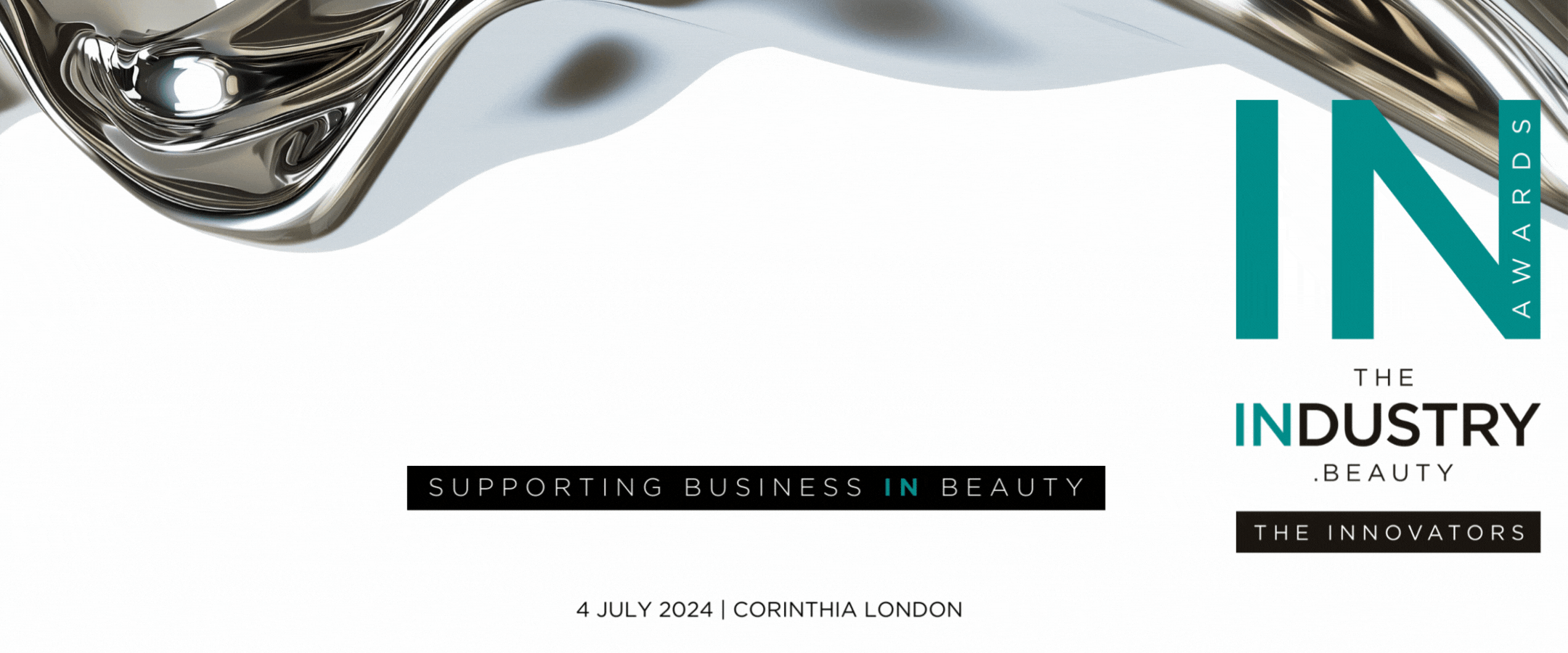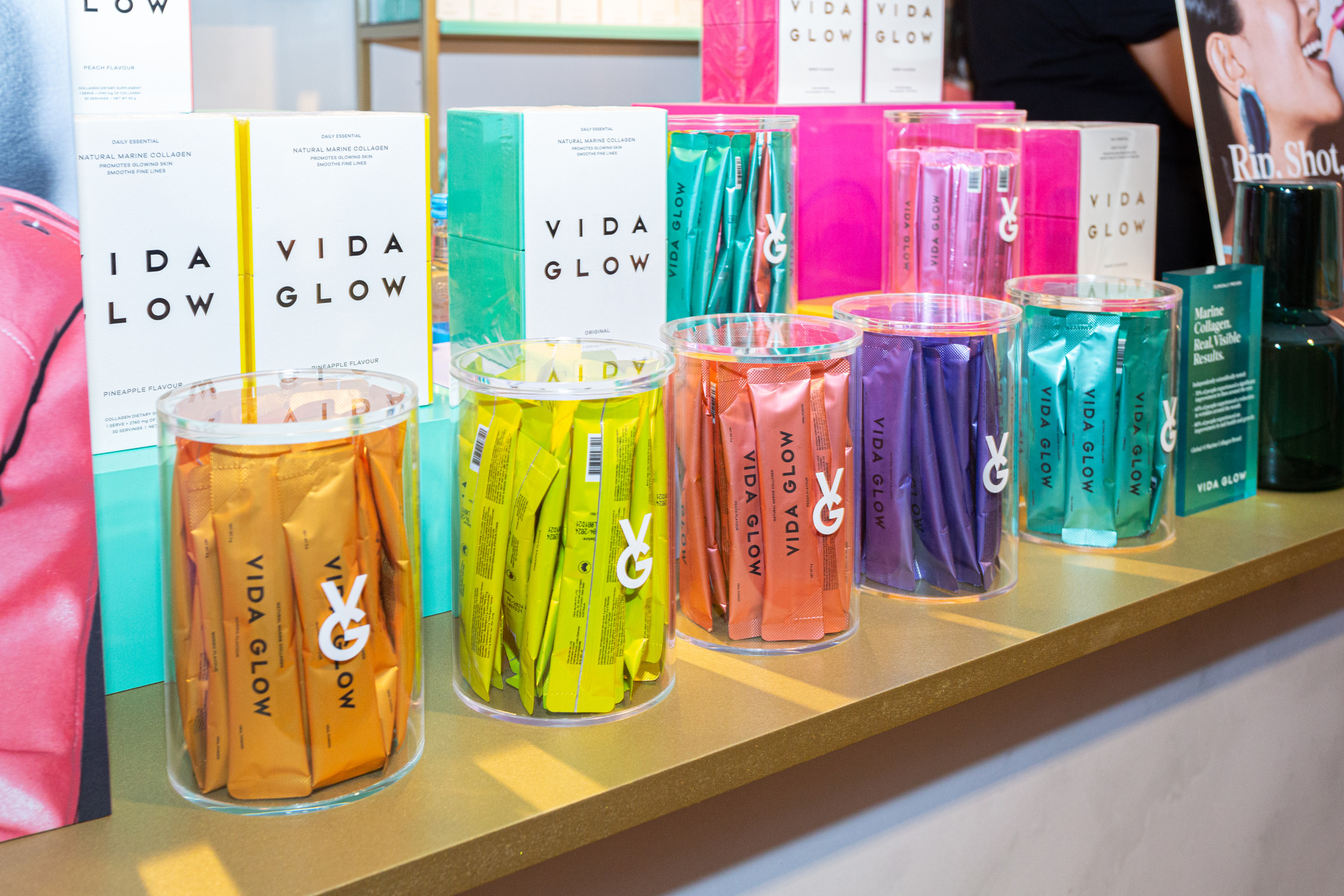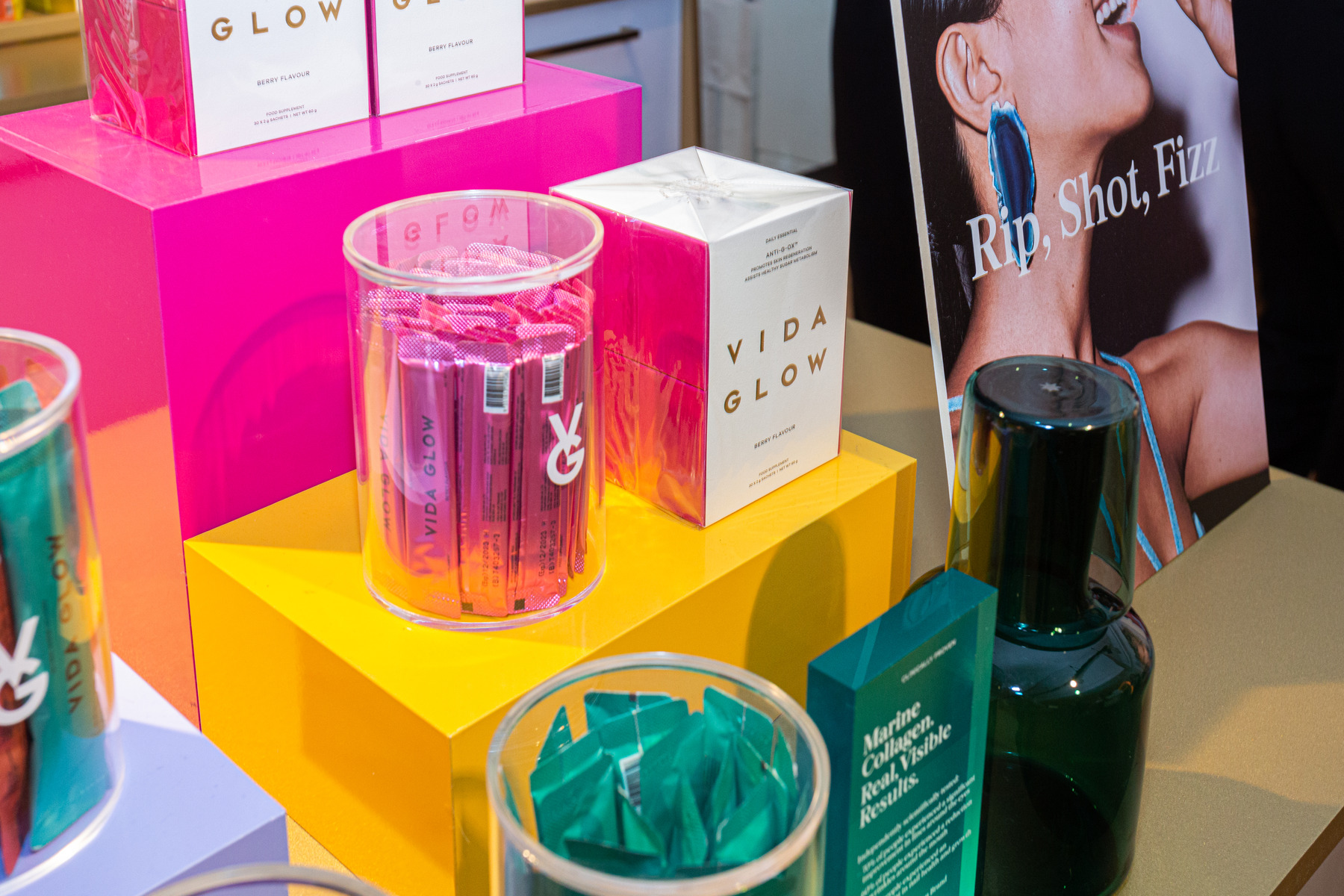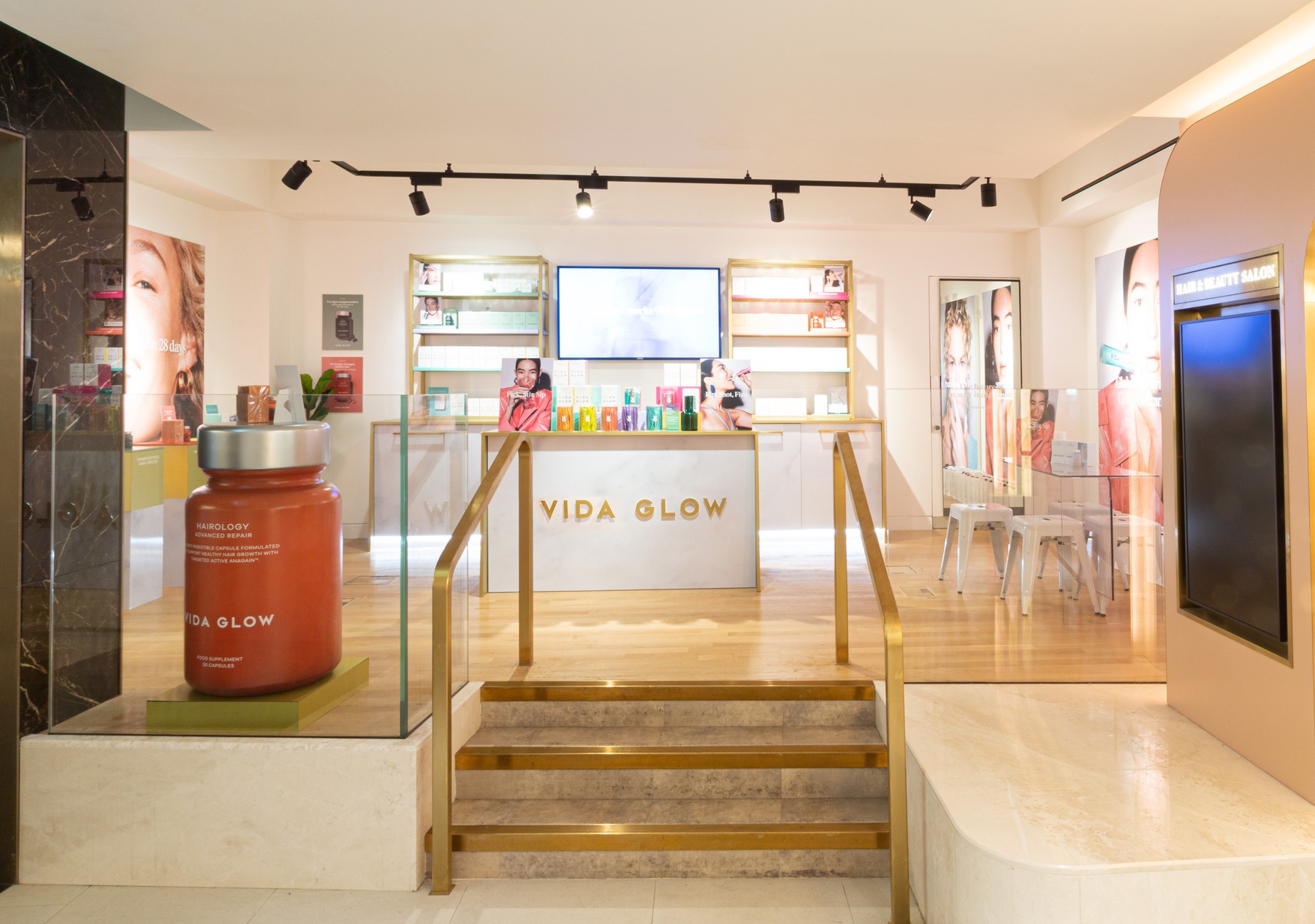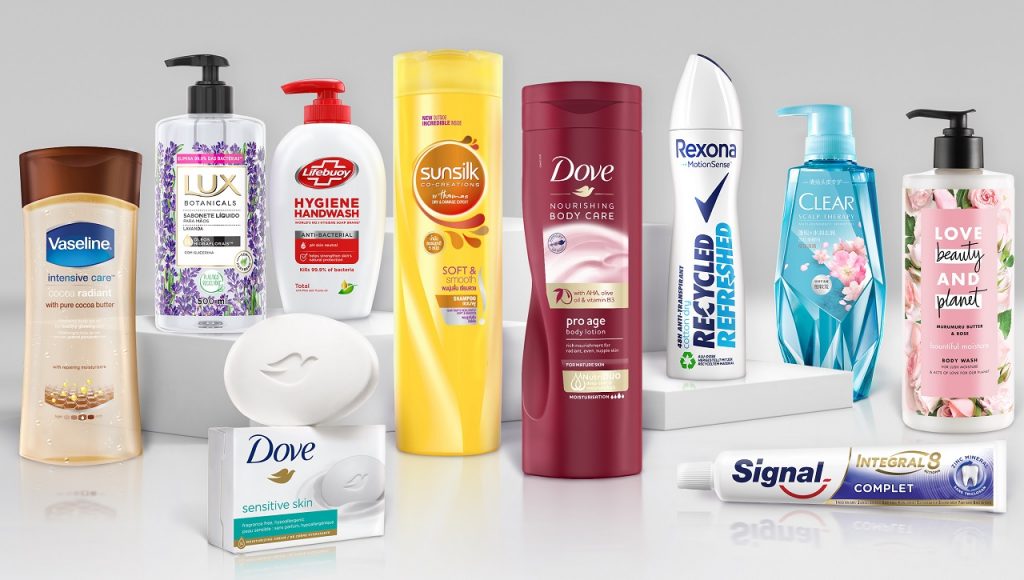The Interview: Anna Lahey, founder, Vida Glow
Ten years ago Anna Lahey didn’t know was marine collagen was; today she sits at the head of the world’s most successful marine collagen brand, Vida Glow. One box of its Orginal Marine Collagen formula (which was launched in 2014) is sold every four seconds around the world.
It was a trip to Japan that sparked Australian law graduate Lahey’s interest in the benefits of collagen and the subsequent “transformational” results she experienced when taking it to help combat hair loss that she was experiencing due to Von Willebrand disease, a rare blood clotting disorder which Lahey has.
“What was interesting,” says Lahey of her fateful trip to Japan, “was that collagen supplementation was everywhere, in the equivalent of a 7-11, in the supermarket. I went to the gym, they asked if I wanted collagen water. I went to a restaurant, they asked if I wanted my soup infused with collagen. I had never heard of collagen before, I thought collagen was Botox! So, I was like, ‘sure, give me some collagen!’,” she jokes.
She took some home and began taking it, having researched its potential benefits in helping to combat a range of different health concerns. “What I found was 30 years of clinical studies and scientific research on the benefits of collagen supplementation, not just for hair, skin and nails but for things like osteoporosis health, joint pain in athletes, the treatment of alopecia, and lots of different benefits,” she explains.
When her hair loss began clogging up the shower, she was motivated to give it a try and says the results were apparent within two months. “I was taking three a day – you absolutely don’t need to take three a day – and my transformative results from taking collagen supplementation came withing two months. That was really the idea of starting [Vida Glow],” she says.
Until Lahey decided to set up Vida Glow, collagen largely came in white, unbranded boxes, but she wanted to ensure her packaging was attractive and the taste of her products was palatable (the original marine collagen product is free of flavour, but berry, mango and pineapple versions have been added). To ensure people kept the discipline of taking the product, she wanted to make the experience a pleasurable one.
She also wanted to ensure that her product was of the highest possible quality. While Vida Glow was a trailblazer in the market, many brands have followed suit with collagen products launching thick and fast as consumers latch on to the idea, and the benefits, of ingestibles.
“Collagen now is like a commodity,” says Lahey, “it’s like the new candle, there is a new collagen brand every month, but they are not all created equal.
“The difference with our collagen is number one that it’s a hydrolised peptide powder. We use the skin of fish and our fish are bred for consumption for hospitality in open water farms in Europe. There is no such thing as sustainable wild-caught fish, you are putting so much pressure on biodiversity, you are not testing for heavy metals and other bi-catchments that can happen in the ocean, there is nothing sustainable about wild-caught fish. It’s a pet peeve of mine.”
Vida Glow uses four different species for the 21 amino acids necessary to create its collagen peptide powder and claims to have the lowest molecule weight of all collagen powders on the market. This is important, says Lahey, because “the lower the molecule weight the higher the absorbtion rate, the higher the efficacy and the higher the bio-availability of the product.”
She launched the brand first in her home market of Australia, but a move into China, where she knew the consumer was already knowledgeable about collagen was what transformed the business. The success was such that it allowed the brand to expand, take on staff and tackle new markets, such as the UK where it launched last year.
The original collagen powders are designed to be dissolved in liquid (water or juice) and taken as a drink. You can take up to three sachets a day (consumers over 45 are recommended to take up to three) and the Vida Glow molecule weight allows for the serving size to be small (3g), while other brands can be up to 24g.
When taken as a drink, which is the best mechanism for this particular product, the collagen passes the lining of the stomach intact and then it is absorbed and distributed via the bloodstream through blood vessels to the collagen matrix under the surface of the skin (collagen is the main structural protein in the human body). By consuming collagen this way you not only introduce more collagen into the body but also stimulate fibroblast proliferation; these are the cells responsible for collagen production.
But it’s not just collagen that obsesses Lahey. Vida Glow has branched beyond pure collagen-based products, and is now on a path to transition into a fully-fledged ingestible beauty brand. Further products have been added to the line-up with each targeting a specific concern and each created in the format that will optimise their efficacy and absorption.
Following the success of the Original Marine collagen product, Vida Glow launched Anti G-Ox, which is an effervescent powder designed to be taken directly onto the tongue. The vegan product contains no collagen but a whole host of other vitamins, minderals and anti-oxidants – including vitamin C, niacinamide, biotin, chromium, vitamin E and magnesium – which target the three root causes of premature ageing; oxidated stress, inflammation and glycation (effectively excess sugar molecules). It should be seen as more of a preventative, rather than a cure, for signs of ageing, explains Lahey.
There are, however, a selection of products that are very much about treating concerns and reversing problems – they fall under the umbrella of the Advanced Repair range. Via a daily vegan, slow-release capsule consumers can use a Vida Glow product to target very specific issues, such hair loss via Hairology, pigmentation and dark circles via Radiance and acne via the latest product, called Clear.
When it comes to the treatment of pigmentation and acne for instance, often topical treatments can be very harsh on the skin, while an ingestible product will not be and will also target the entire surface of the skin rather than just one particular area. “I believe the future of ingestibles will be this very targeted approach,” says Lahey.
To prove the benefits of its formulations Vida Glow carries out randomised, double-blind, placebo-controlled trials, which are the “gold standard” of clinical trials. For Radiance 61% of triallists were happy with their overall results after one month, 90% after two months and 100% after three months. No surprise then that it’s now the second best seller in the range and has sold out five times since its launch.
The success of this product was what crystallised the brand’s strategy to become an ingestible beauty brand and it was followed in the range by Hairology in April of this year and Clear, which will be available from 5 December.
Lahey says the pandemic has had “a huge part to play” in the explosion in ingestible beauty. “Pre-pandemic people were getting their treatments in salons, their haircuts, their facials. In the pandemic there was a two-year break and people weren’t able to do that as much. Between 2019 and 2022 we saw a 600% increase in our e-commerce website.
“The other thing about ingestibles is that for such a long time people sat on the fence – and some still do – about whether or not it works, about whether or not it’s pseudo science. And although the science has always been there, the advocacy from professionals, like dermatologists, aestheticians, cosmetic doctors, hasn’t been there. But now we are seeing the rise of that.”
The biggest barrier to acceptance, explains Mahey, is education and this has put retailers off stocking ingestible products in the past, as their staff needed to be informed of the benefits and to be able to communicate them to customers (Vida Glow will offer masterclasses to stockists who want and need the support). Plus consumers need to be committed to their regimes and be prepared to wait anywhere between one to six months before they can see transformational benefits. They are not a quick fix.
But these barriers are being overcome. Vida Glow is staging a physical pop-up in the health & beauty department of Harrods until the end of November where customers can come, try all the products and be guided on a regime that would work best for their skin and health concerns.
Plus, having arrived in the UK just last year, retailers are embracing it. The brand is available not just via its own channels but through stockists such as John Bell & Croyden, John Lewis, Liberty, Lookfantastic and Escentual.
The momentum behind this hot new category is now very clear to see but there is still a long way to go, says Mahey: “Even though ingestible beauty is booming, it’s really only just beginning.”



